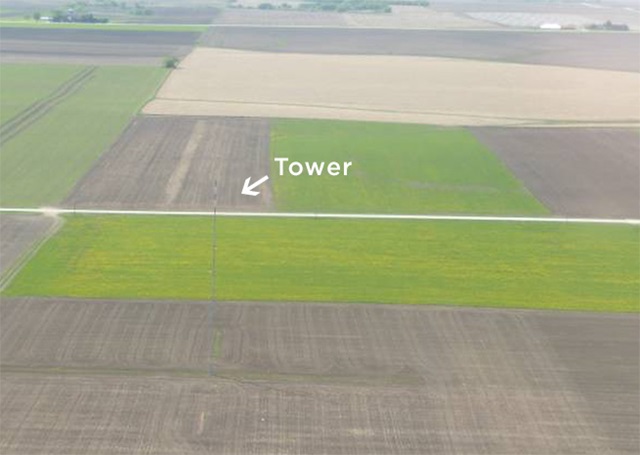
AOPA testified in favor of Michigan legislation requiring slender weather information towers popping up across the state to be marked and registered to preserve the safety of pilots. House Bill No. 4727 requires orange-and-white striping on meteorological evaluation towers (MET), orange marker balls affixed to guy wires for increased visibility, and the towers’ registration in a searchable database made available to pilots.
AOPA Great Lakes Regional Manager Bryan Budds testified before a Sept. 30 Michigan House hearing to maintain safety for pilots contributing to the state’s $4.1 billion general aviation industry.
“Right now, pilots are unable to adequately identify these low-level obstructions during preflight procedures and while in flight because there is no registration or marking of METs which can penetrate airspace up to heights of 200 feet and be erected without notifying the FAA, the state, or local pilots,” Budds said.
He said that AOPA met several times with House committee members and the bill’s sponsor to stress the importance of safety and adequate marking of the towers.
“AOPA was pleased to partner with Representative Triston Cole and the Michigan Department of Transportation’s Office of Aeronautics to greatly increase the safety of low-flying aviators across Michigan,” said Budds.
In a letter to Lee Chatfield, the chairman of the House Local Government Committee, Budds wrote that a recent surge in constructing METs has “raised significant, substantiated safety concerns for the general aviation community in Michigan.”
Budds wrote, “METs fall just below the existing tower marking and registration requirement at 199 feet in height, are gray in color, and the obstructions don’t appear on aeronautical charts because they are currently unregistered with the FAA. Low-flying aircraft are unable to see and avoid these invisible hazards—a situation that has caused fatal aircraft accidents in Texas, California, and Oregon, and has prompted the National Transportation Safety Board to issue an Aviation Safety Alert to pilots while urging policymakers to require MET marking and registration.”
Similar measures increasing safety for pilots flying low near airfields and agricultural operations have already passed in Oklahoma, Colorado, Texas, and numerous other states.
Budds said AOPA will continue to meet with legislators and committee members to raise awareness throughout Michigan’s legislative session. “Marking and registration of METs would insert an additional level of safety for agricultural operators, airborne law enforcement and medical evacuation, aerial surveyors, and other operators of both fixed-wing aircraft and rotorcraft in Michigan,” Budds said.



